An Introduction to Symbolic Dynamics and Coding 2nd Edition by Douglas Lind, ISBN-13: 978-1108820288
[PDF eBook eTextbook]
- Publisher: Cambridge University Press; 2nd edition (March 4, 2021)
- Language: English
- 566 pages
- ISBN-10: 110882028X
- ISBN-13: 978-1108820288
Elementary introduction to symbolic dynamics, updated to describe the main advances in the subject since the original publication.
Symbolic dynamics is a mature yet rapidly developing area of dynamical systems. It has established strong connections with many areas, including linear algebra, graph theory, probability, group theory, and the theory of computation, as well as data storage, statistical mechanics, and $C^*$-algebras. This Second Edition maintains the introductory character of the original 1995 edition as a general textbook on symbolic dynamics and its applications to coding. It is written at an elementary level and aimed at students, well-established researchers, and experts in mathematics, electrical engineering, and computer science. Topics are carefully developed and motivated with many illustrative examples. There are more than 500 exercises to test the reader’s understanding. In addition to a chapter in the First Edition on advanced topics and a comprehensive bibliography, the Second Edition includes a detailed Addendum, with companion bibliography, describing major developments and new research directions since publication of the First Edition.
Table of Content:
PREFACE TO THE FIRST EDITION . . . . . . . . . . . xiii
PREFACE TO THE SECOND EDITION . . . . . . . . . . xix
CHAPTER 1. SHIFT SPACES . . . . . . . . . . . . . . . . 1
§1.1. Full Shifts . . . . . . . . . . . . . . . . . . . . . . . . 1
§1.2. Shift Spaces . . . . . . . . . . . . . . . . . . . . . . . 5
§1.3. Languages . . . . . . . . . . . . . . . . . . . . . . . 9
§1.4. HigherBlock Shifts andHigherPowerShifts . . . . . . . . 12
§1.5. SlidingBlockCodes . . . . . . . . . . . . . . . . . . 15
§1.6. ConvolutionalEncoders . . . . . . . . . . . . . . . . . 23
CHAPTER 2. SHIFTS OF FINITE TYPE . . . . . . . . . 28
§2.1. FiniteTypeConstraints . . . . . . . . . . . . . . . . 28
§2.2. Graphs andTheir Shifts . . . . . . . . . . . . . . . . 33
§2.3. GraphRepresentations of Shifts ofFiniteType . . . . . . 41
§2.4. State Splitting . . . . . . . . . . . . . . . . . . . . . 49
§2.5. Data Storage and Shifts ofFiniteType . . . . . . . . . . 59
CHAPTER 3. SOFIC SHIFTS . . . . . . . . . . . . . . . 64
§3.1. Presentations of Sofic Shifts . . . . . . . . . . . . . . . 64
§3.2. Characterizationsof Sofic Shifts . . . . . . . . . . . . . 70
§3.3. MinimalRight-ResolvingPresentations . . . . . . . . . . 76
§3.4. Constructions andAlgorithms . . . . . . . . . . . . . . 86
CHAPTER 4. ENTROPY . . . . . . . . . . . . . . . . . 100
§4.1. Definition andBasicProperties . . . . . . . . . . . . . 100
§4.2. Perron–FrobeniusTheory . . . . . . . . . . . . . . . . 107
§4.3. ComputingEntropy . . . . . . . . . . . . . . . . . . 113
§4.4. IrreducibleComponents . . . . . . . . . . . . . . . . . 118
§4.5. Cyclic Structure . . . . . . . . . . . . . . . . . . . . 126
CHAPTER 5. FINITE-STATE CODES . . . . . . . . . . 137
§5.1. RoadColorings andRight-ClosingLabelings . . . . . . . . 138
§5.2. Finite-StateCodes . . . . . . . . . . . . . . . . . . . 145
§5.3. ApproximateEigenvectors . . . . . . . . . . . . . . . . 150
§5.4. CodeConstruction . . . . . . . . . . . . . . . . . . . 157
§5.5. SlidingBlockDecoders . . . . . . . . . . . . . . . . . 165
CHAPTER 6. SHIFTS AS DYNAMICAL SYSTEMS . . . 172
§6.1. Metric Spaces . . . . . . . . . . . . . . . . . . . . . 173
§6.2. Dynamical Systems . . . . . . . . . . . . . . . . . . . 184
§6.3. Invariants . . . . . . . . . . . . . . . . . . . . . . . 188
§6.4. ZetaFunctions . . . . . . . . . . . . . . . . . . . . . 193
§6.5. MarkovPartitions . . . . . . . . . . . . . . . . . . . 202
CHAPTER 7. CONJUGACY . . . . . . . . . . . . . . . 217
§7.1. TheDecompositionTheorem . . . . . . . . . . . . . . 218
§7.2. Strong ShiftEquivalence . . . . . . . . . . . . . . . . 226
§7.3. ShiftEquivalence . . . . . . . . . . . . . . . . . . . 234
§7.4. Invariants for ShiftEquivalence . . . . . . . . . . . . . 242
§7.5. ShiftEquivalence and theDimensionGroup . . . . . . . . 252
CHAPTER 8. FINITE-TO-ONE CODES AND FINITE
EQUIVALENCE . . . . . . . . . . . . . 265
§8.1. Finite-to-OneCodes . . . . . . . . . . . . . . . . . . 265
§8.2. Right-ResolvingCodes . . . . . . . . . . . . . . . . . 276
§8.3. FiniteEquivalence . . . . . . . . . . . . . . . . . . . 283
§8.4. Right-ResolvingFiniteEquivalence . . . . . . . . . . . . 295
CHAPTER 9. DEGREES OF CODES AND ALMOST
CONJUGACY . . . . . . . . . . . . . . 302
§9.1. TheDegree of aFinite-to-OneCode . . . . . . . . . . . 302
§9.2. Almost InvertibleCodes . . . . . . . . . . . . . . . . 314
§9.3. AlmostConjugacy . . . . . . . . . . . . . . . . . . . 323
§9.4. Typical Points According to Probability . . . . . . . . . 330
CHAPTER 10. EMBEDDINGS AND FACTOR CODES . . 338
§10.1. TheEmbeddingTheorem . . . . . . . . . . . . . . . 338
§10.2. TheMaskingLemma . . . . . . . . . . . . . . . . . 355
§10.3. LowerEntropyFactorCodes . . . . . . . . . . . . . . 359
CHAPTER 11. REALIZATION . . . . . . . . . . . . . . 369
§11.1. Realization ofEntropies . . . . . . . . . . . . . . . . 370
§11.2. Realization of ZetaFunctions . . . . . . . . . . . . . . 385
§11.3. Pure Subgroups of Dimension Groups . . . . . . . . . . 397
CHAPTER 12. EQUAL ENTROPY FACTORS . . . . . . 402
§12.1. Right-ClosingFactors . . . . . . . . . . . . . . . . . 403
§12.2. EventualFactors ofEqualEntropy . . . . . . . . . . . 411
§12.3. IdealClasses . . . . . . . . . . . . . . . . . . . . . 416
§12.4. Sufficiency of the IdealClassCondition . . . . . . . . . 424
CHAPTER 13. GUIDE TO ADVANCED TOPICS . . . . . 430
§13.1. More on Shifts ofFiniteType and Sofic Shifts . . . . . . 430
§13.2. Automorphisms of Shifts ofFiniteType . . . . . . . . . 434
§13.3. SymbolicDynamics and StationaryProcesses . . . . . . . 440
§13.4. SymbolicDynamics andErgodicTheory . . . . . . . . . 444
§13.5. Sofic-like Shifts . . . . . . . . . . . . . . . . . . . . 449
§13.6. ContinuousFlows . . . . . . . . . . . . . . . . . . . 452
§13.7. Minimal Shifts . . . . . . . . . . . . . . . . . . . . 456
§13.8. One-Sided Shifts . . . . . . . . . . . . . . . . . . . 460
§13.9. Shiftswith aCountableAlphabet . . . . . . . . . . . . 462
§13.10. HigherDimensional Shifts . . . . . . . . . . . . . . . 465
ADDENDUM . . . . . . . . . . . . . . . . . . . . . . . . 471
§A.1. ClassificationProblems . . . . . . . . . . . . . . . . . 471
§A.2. FactorCodes andEmbeddings . . . . . . . . . . . . . 476
§A.3. SymbolicModels for Smooth Systems . . . . . . . . . . 478
§A.4. Realization . . . . . . . . . . . . . . . . . . . . . . 479
§A.5. AutomorphismGroups of Shifts . . . . . . . . . . . . . 481
§A.6. HigherDimensional Shifts . . . . . . . . . . . . . . . 485
§A.7. Equilibrium States . . . . . . . . . . . . . . . . . . . 495
§A.8. SymbolicDynamics overCountableGroups . . . . . . . . 502
§A.9. SymbolicRepresentations ofAlgebraicActions . . . . . . 508
BIBLIOGRAPHY . . . . . . . . . . . . . . . . . . . . . . 515
ADDENDUM BIBLIOGRAPHY . . . . . . . . . . . . . . 531
NOTATION INDEX . . . . . . . . . . . . . . . . . . . . 541
INDEX . . . . . . . . . . . . . . . . . . . . . . . . . . . 544
Douglas Lind is Professor Emeritus of Mathematics at the University of Washington. He was department chair, is an Inaugural Fellow of the American Mathematical Society, and served in many governance roles for the Mathematical Sciences Research Institute, including chairing the committee that designed the 2006 addition.
Brian Marcus is Professor of Mathematics at the University of British Columbia. He shared the 1993 Leonard Abraham Prize Paper award of the IEEE Communications Society. He is currently the UBC Site Director of the Pacific Institute for the Mathematical Sciences (PIMS) and is a Fellow of the AMS and IEEE.
What makes us different?
• Instant Download
• Always Competitive Pricing
• 100% Privacy
• FREE Sample Available
• 24-7 LIVE Customer Support


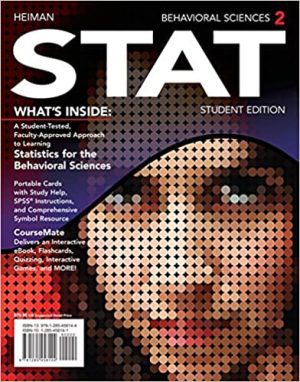
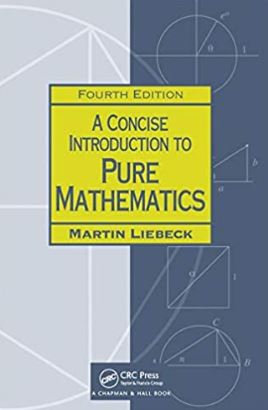
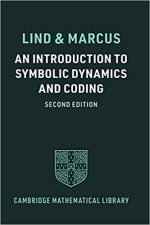
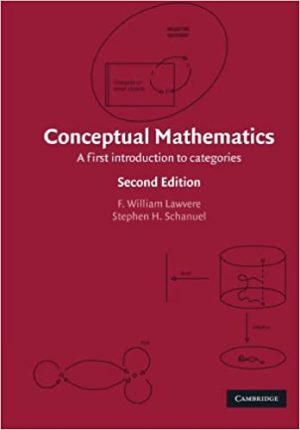
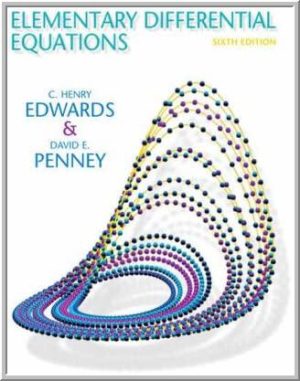
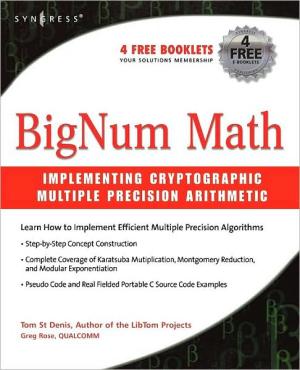

Reviews
There are no reviews yet.